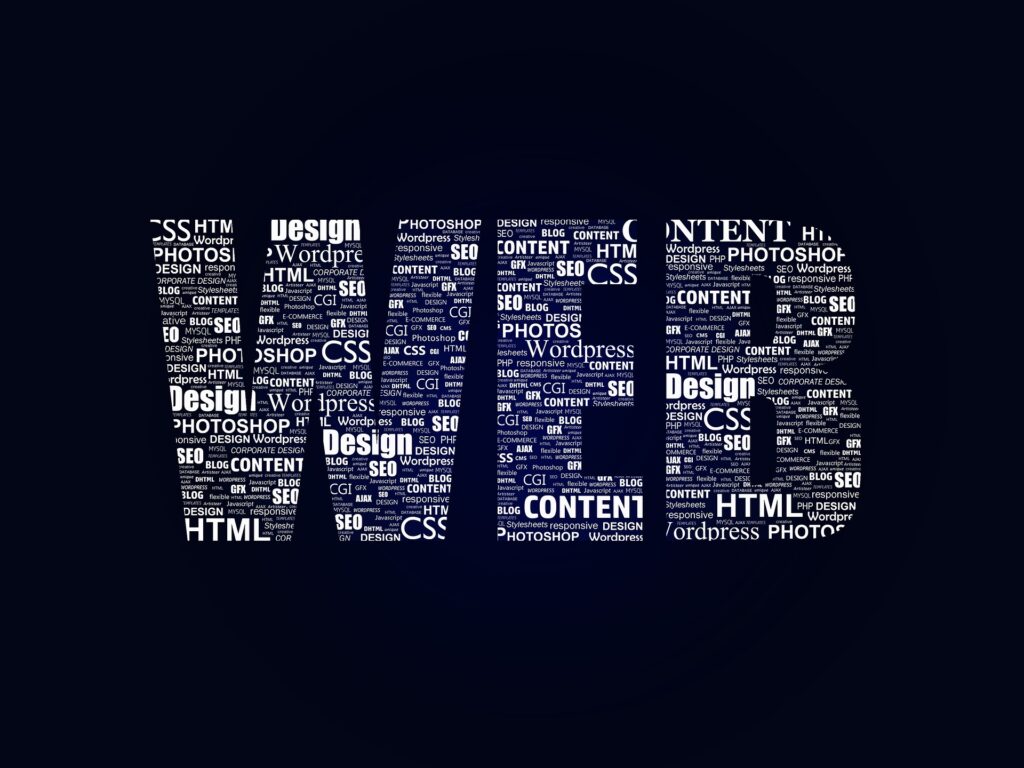Server-side technologies
On the server side, powerful technologies are indispensable for developing modern web applications. Here are some leading options:
PHP
PHP is one of the most popular and widely used server-side scripting languages. With PHP, you can create dynamic websites, process data, and manage databases. It offers a wide range of frameworks like Laravel, CodeIgniter, and Symfony, which accelerate the development process.
ASP.NET
Microsoft’s ASP.NET is a robust framework for creating web applications. It supports multiple programming languages such as C#, VB.NET, and F#, and offers features like Web API, Web Forms, and MVC. ASP.NET Core, the cross-platform version, facilitates development for different operating systems.
Python
Python has become a popular choice for web developers thanks to its readability, flexibility, and extensive libraries. With frameworks like Django and Flask, you can quickly create scalable web applications. Python is also excellent for tasks in machine learning and data analysis.
These server-side technologies provide powerful features, extensive developer tools, and large communities to help you create impressive and reliable web applications.

Client-side technologies
On the client side, HTML, CSS, and JavaScript are the core elements that form the foundation of modern web applications. Here are the key technologies at a glance:
HTML
HTML (Hypertext Markup Language) is the standard language for structuring and displaying web content. With HTML, you define the elements of a webpage such as text, images, links, and multimedia. It forms the basis of every webpage and enables the semantic markup of content for better accessibility and search engine optimization.
CSS
CSS (Cascading Style Sheets) is the language for designing the appearance of webpages. With CSS, you can control colors, fonts, layouts, and other visual aspects to give your websites an appealing design. CSS allows for a clear separation of content and presentation, making maintenance and consistency easier.
JavaScript
JavaScript is a powerful scripting language that makes webpages interactive and dynamic. With JavaScript, you can handle user interactions, create animations, manipulate data, and perform asynchronous communication with servers. Modern JavaScript frameworks and libraries like React, Angular, and Vue.js simplify the development of complex single-page applications.
These client-side technologies work seamlessly together to create user-friendly and powerful web applications that function flawlessly across various devices and platforms. Mastery of these technologies is essential for any web developer to be successful in 2024 and beyond.
Web-Frameworks
In modern web development, web frameworks play a crucial role. They provide developers with a set of pre-built components and tools that significantly speed up and simplify the development process. Here are some of the leading web frameworks to keep an eye on in 2024:
Laravel
Laravel is a powerful PHP-based web framework known for its elegant syntax and extensive features. It follows the Model-View-Controller (MVC) pattern and offers tools for tasks like routing, caching, and authentication. Laravel is popular for building modern PHP applications.
- Outstanding Features: Laravel simplifies common tasks in PHP projects such as authentication, routing, sessions, and caching thanks to its expressive syntax.
- Blade-Templating-Engine: Laravel comes with its own lightweight Blade templating engine, which is intuitive and assists in creating amazing layouts with its control structures.
- Comprehensive Tools: This framework includes a wide range of tools and features for tasks like queues, real-time events, and scheduled jobs, making it highly suitable for modern real-time web applications.
ASP.NET
Microsoft’s ASP.NET is a robust framework for creating web applications. It supports multiple programming languages such as C#, VB.NET, and F#, and offers features like Web API, Web Forms, and MVC. ASP.NET Core, the cross-platform version, facilitates development for different operating systems.
Django
Django is a powerful Python web framework that simplifies the development of web applications. It aims to optimize the process from conception to completion of an application. By handling many of the hurdles of web development, developers can focus on writing their apps without reinventing the wheel.
- Integrated Functions: Django includes built-in features such as an ORM (Object-Relational Mapping), authentication, and an admin interface, significantly reducing development time.
- Security: Django prioritizes security and provides tools that help developers avoid common security vulnerabilities such as SQL injection, Cross-Site Scripting (XSS), and Cross-Site Request Forgery (CSRF).
- Versatile Use Case: Django is suitable for a variety of web applications, ranging from content management systems to social networks and scientific computing platforms.
These powerful web frameworks provide developers with the tools to create impressive and reliable web applications that meet the demands of 2024 and beyond.
JavaScript Libraries
In the world of web development, JavaScript libraries play a crucial role. They provide developers with pre-built functions and tools that significantly speed up and simplify the development process. Here are some of the leading JavaScript libraries to keep an eye on in 2024:
jQuery
jQuery revolutionized the way we work with JavaScript. Since its introduction in 2006, it has significantly simplified JavaScript programming by easing HTML document manipulation, event handling, animations, and more. Despite the rise of modern JavaScript frameworks, jQuery’s influence on the web will always be felt.
- High Adoption: An estimated 90% of all websites use jQuery, underscoring its enduring relevance.
- Simple Syntax: jQuery provides an intuitive and compact syntax that significantly simplifies writing JavaScript code.
- Wide Browser Compatibility: jQuery ensures seamless functionality across different browsers and versions.
React
React, developed by Facebook, has revolutionized the development of modern web applications. With its component-based architecture, it enables the creation of reusable UI elements. React is known for its flexibility and speed.
- Virtual DOM: React uses a virtual DOM, which significantly enhances rendering performance.
- Modular Components: The modular structure of React promotes code reusability and facilitates the development of complex user interfaces.
- Powerful: React is ideal for developing single-page applications and mobile apps with high interactivity.
Angular
Angular, initiated by Google, is a comprehensive framework that offers a full solution with strong conventions. It supports TypeScript and aims to simplify the development of scalable applications through a clear structure.
- Robust Platform: Angular bietet eine solide Plattform mit starken Typisierungsfunktionen durch TypeScript.
- Comprehensive Features: The framework integrates solutions for form handling, routing, HTTP client, and more.
- Scalability: Angular is particularly suitable for enterprise-critical applications and large teams.
These powerful JavaScript libraries and frameworks provide developers with the tools to create impressive and reliable web applications that meet the demands of 2024 and beyond.
Database Technologies
In modern web development, databases play a crucial role in storing and managing data. Here are some of the leading database technologies to keep an eye on in 2024:
MySQL
MySQL is a widely used, general-purpose open-source relational database management system (RDBMS) developed by Oracle. Like other relational systems, MySQL stores data in tables and rows, enforces referential integrity, and uses the Structured Query Language (SQL) for data access.
- SQL-Support: MySQL supports SQL with proprietary extensions.
- Programming Languages: It supports Transact-SQL, .NET languages, R, Python, and (with SQL Server 2019) Java.
- ACID Compliance: ACID compliance is provided for the InnoDB storage engine, but not for MyISAM.
- Authorization Concept: MySQL offers a fine-grained authorization concept in accordance with the SQL standard, utilizing users, but it does not support user groups or roles natively.
MySQL is a common choice for users with extensive experience in traditional SQL scripting, designing solutions for relational databases, or modifying and updating existing applications that already interact with a relational system.
SQL Server
SQL Server is the relational database management system developed by Microsoft. It offers powerful features and tools for managing enterprise data.
- Robust RDBMS: SQL Server is a robust relational database management system (RDBMS) with full SQL support and proprietary extensions.
- Security: SQL Server features a fine-grained permission model with users and roles for accessing data.
- ACID-conformity: SQL Server ensures ACID compliance for transactions.
SQL Server is a reliable choice for mission-critical applications that require strong transactional consistency and data security.
MongoDB
MongoDB is a leading document-oriented NoSQL database. Unlike relational systems, MongoDB stores data in flexible JSON-like documents without a fixed schema.
- Flexible Data Model: Documents in MongoDB can have varying structures, which allows for high flexibility in application development.
- Scalability: MongoDB can be horizontally scaled through sharding and replication.
- Queries: MongoDB supports powerful querying capabilities through the MongoDB Query Language (MQL), which is similar to JavaScript.
- Security: MongoDB offers role-based access controls and encryption for data.
With its schema-free structure and horizontal scalability, MongoDB is an attractive choice for applications that require flexibility, performance, and easy development.
These powerful database technologies provide you with the tools to create impressive and reliable web applications that meet the demands of 2024 and beyond.

Cloud-Services
In today’s digitalized world, cloud services play a crucial role. They offer businesses and individuals a scalable and cost-effective way to utilize resources such as computing power, storage, and databases as needed. Here are some of the leading cloud providers to keep an eye on in 2024:
Amazon Web Services
Amazon Web Services (AWS) is the largest cloud provider in the world, holding a market share of 32% and serving over 1.45 million companies. AWS offers a comprehensive suite of on-demand computing resources, providing users with access to computing power, storage, and databases. Key services include Amazon EC2 for virtual servers, S3 for scalable object storage, and RDS for managed databases.
AWS is known for its global reach with data centers worldwide, providing low-latency resources. Users can deploy applications, run workloads, and securely store data, paying only for the resources they consume. AWS supports private clouds, hybrid clouds, and multi-cloud computing, but it is most renowned for its scalable public cloud capabilities.
Google Cloud Platform
Just like Microsoft Azure and AWS, Google Cloud Platform (GCP) offers a comprehensive cloud offering, including IaaS, PaaS, and SaaS. What distinguishes GCP is its focus on advanced artificial intelligence (AI) and machine learning. The platform handles large volumes of data points in various formats, making it ideal for data-driven enterprises looking to frequently optimize their operations.
Companies can also leverage the benefits of Google’s machine learning tools, which make data interpretation (from text to speech data) much more understandable. With its expertise in AI and machine learning, the Google Cloud Platform positions itself as a leading provider for data-intensive workloads.
Microsoft Azure
Even though it emerged years after AWS and Google Cloud, Microsoft Azure has established itself as one of the most well-known cloud providers in the market. Microsoft Azure offers IaaS, PaaS, and SaaS solutions, but its main offering is hybrid cloud computing applications. It provides a wide range of features that support both the use of private clouds and public clouds, as well as a robust on-premises infrastructure that is easy to integrate.
With its strength in hybrid environments and seamless integration with other Microsoft products, Azure is an attractive choice for enterprises seeking a consistent platform for their cloud and on-premises resources.
These leading cloud providers offer powerful features, extensive tools, and global reach to meet the demands of modern web applications in 2024 and beyond. Choosing the right provider depends on your specific requirements for performance, scalability, cost, and integration.
Version Control Systems
In modern web development, version control systems are indispensable for facilitating collaboration on projects and efficiently managing code. Here are some of the leading options to keep an eye on in 2024:
Git
Git is a powerful distributed version control system developed by Linus Torvalds for the development of the Linux kernel. It allows developers to track changes to their code, create branches, and collaborate seamlessly.
- Decentralized: Git is based on a distributed model, where each developer has a complete copy of the repository on their local system.
- Fast and efficient: Git is known for its speed and efficiency in handling large projects with many files.
- Robust collaboration: Git provides powerful collaboration features such as pull requests, code reviews, and issue tracking.
SVN
SVN (Apache Subversion) is a centralized version control system widely used in many companies and organizations. Unlike Git, it has a central repository that all users must access.
- Centralised model: SVN is based on a centralized model with a single official repository.
- Simple Management: SVN is easy to manage and provides a user-friendly interface.
- Stable Releases: SVN is well-suited for projects that require stable releases and strict access control.
Mercurial
Mercurial is another decentralized version control system that operates similarly to Git. It provides an intuitive user interface and is well-suited for smaller teams and projects.
- Distributed Model: Like Git, Mercurial is based on a distributed model with local repositories.
- Ease of Use: Mercurial is known for its simple syntax and user-friendliness.
- Lightweight: Mercurial is lightweight and well-suited for smaller projects with limited resources.
These powerful version control systems provide you with the tools to collaborate efficiently, track changes, and create impressive web applications that meet the demands of 2024 and beyond.
Web development
Content Management Systems
Content Management Systems (CMS), abbreviated as CMS, are programs that assist in the creation, editing, organization, and management of content on websites. They provide a user-friendly interface that allows even technically less proficient individuals to create and manage websites without extensive prior knowledge.
WordPress
WordPress holds the largest market share among content management systems. Originally conceived as a blogging platform, it has since evolved significantly. The intuitive interface makes the platform easy to use. Users can choose from thousands of available themes and plugins to customize their content.
WordPress offers extensive tools for content management. The versatile editor allows easy formatting of content, and publishing new pages and posts is straightforward and convenient. The main advantage of WordPress lies in the simplicity with which users can update content. The platform employs a template-based approach to modify the website’s design. This user-friendly approach enables adding content, images, logos, and conveniently changing the layout.
Drupal
Drupal is one of the most well-known content management systems. Despite having a smaller market share compared to WordPress and Joomla, Drupal is a feature-rich and versatile tool. Additionally, it is completely free and open source.
Drupal allows for the management of custom content through a flexible system. It provides a high level of control over permissions for authorized users. Additionally, Drupal has the capability to manage multilingual sites. Drupal is considered more secure than its two main competitors, Joomla and WordPress. Based on quarterly reports on hacked websites, Drupal sites are less vulnerable to hacking and security threats, which is why it is the preferred choice for government agencies and large organizations.
Drupal 10 offers well-integrated SEO modules for search engine optimization, analytics, and reporting. The intuitive and user-friendly dashboard integrates webmaster tools with analytics reports. Built-in SEO tools like Yoast SEO enable the updating and automation of SEO across vast amounts of content.
Joomla
Joomla has evolved over the years into a popular open-source solution for medium-sized websites. The CMS stands out for its flexibility in design and extensive extension capabilities. Joomla is ideal for community websites, blogs, online magazines, and sites with diverse content. Its comprehensive user management features also allow for the creation of complex member areas.
The popularity of Joomla is justified by several factors. The system not only offers easy hosting but also provides numerous applications, leading to incredible flexibility in customizations. However, Joomla does have its downsides such as lacking comment functionalities, lengthy setup times for posts, and a limited selection of plugins. Overall, Joomla serves as a good free alternative for web development as an open-source CMS without any licensing fees.
Conclusion
Web development has evolved into a dynamic and continuously growing field driven by innovation and technological progress. From the emergence of web development frameworks to Progressive Web Apps (PWAs) and the integration of AI, machine learning, AR, VR, and IoT, web development offers endless possibilities for creating impressive and interactive online experiences.
In the next five years, AI and ML will play a crucial role by enhancing user experience through data analysis, automation, and personalized features. Responsive and adaptive design will become increasingly important due to the growing use of mobile devices and varying screen sizes.
Technologies like Jamstack, Utility-First CSS Frameworks, WebAssembly, API-First Design, TensorFlow.js, Headless CMS, and IoT integration will continue to revolutionize how we create and interact with websites. They offer benefits such as improved performance, security, scalability, developer experience, and innovative features.
To succeed in this rapidly evolving field, as a web developer, you must stay updated with the latest trends, adapt, and embrace change. By mastering the technologies presented in this article, you can create impressive and reliable web applications that meet the demands of 2024 and beyond.








